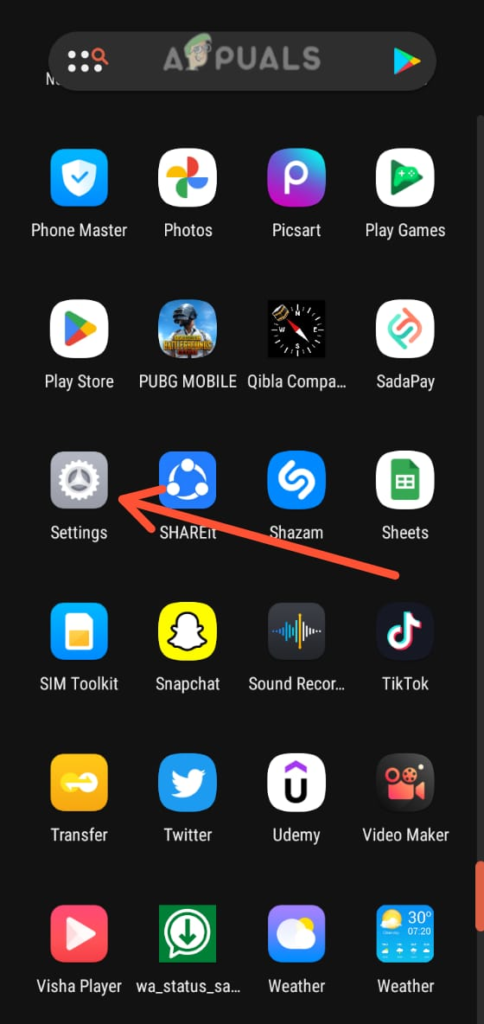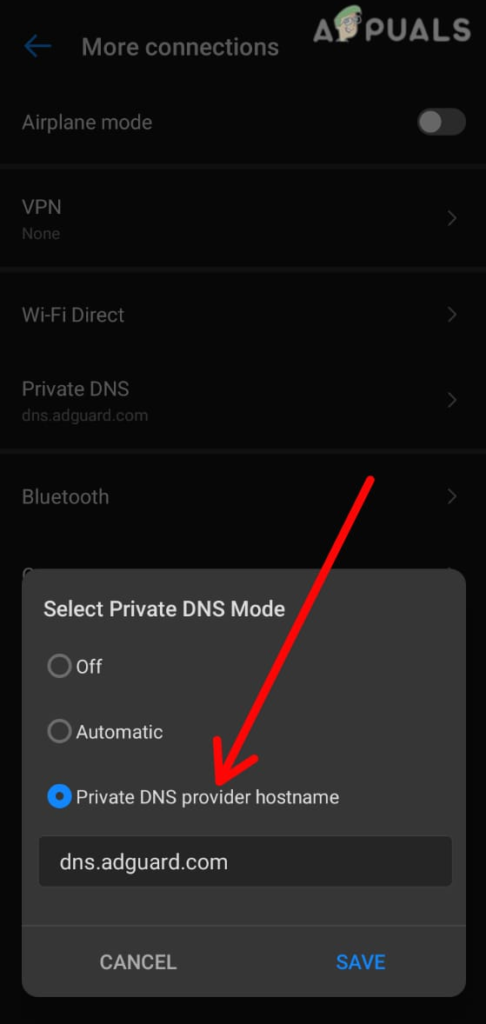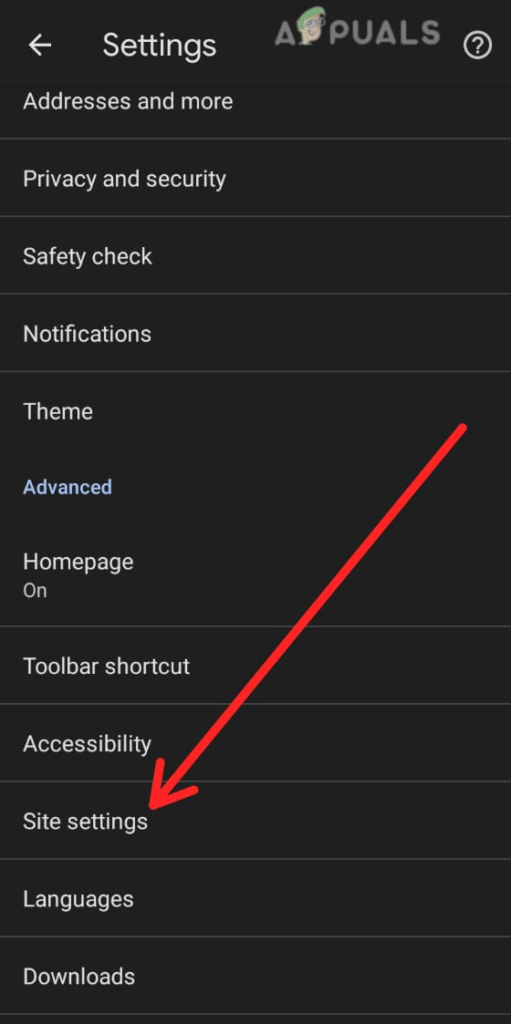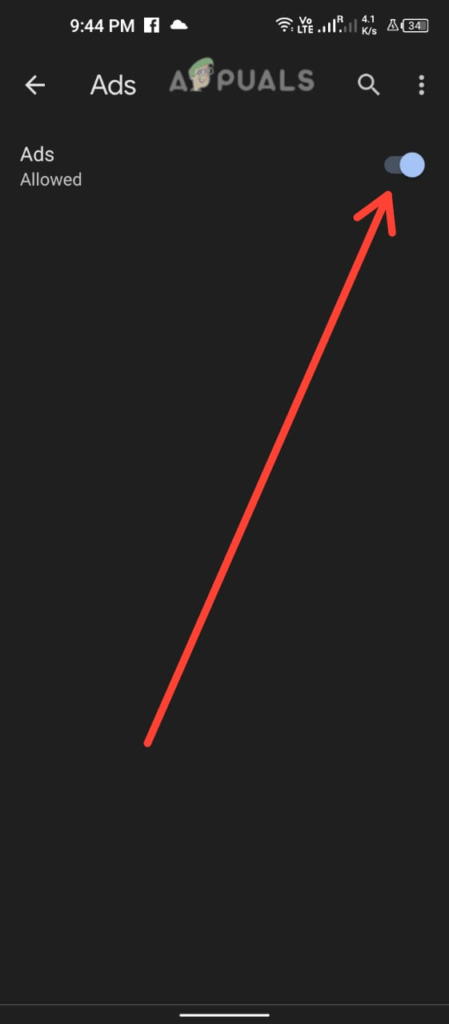6 Ways to make your Android phone and tablet completely ad-free
Ads on mobile devices can be incredibly disruptive, not only taking up valuable screen space but also consuming data and battery life. In this article, we will explore various methods for blocking ads on Android phones and tablets, including built-in system settings, third-party apps, and browser extensions.

With the help of this article you will be able to take control of your android mobile experience and enjoy ad-free browsing.
1. Use Private DNS
You can use a private DNS server to block ads on your Android device. A private DNS server filters out unwanted content, such as ads, by blocking the domains that are known to serve ads. Here’s how you can set up a private DNS server on an Android device:
- Go to your device’s Settings app.

Open the Settings app - Then tap on More connections.

Select More connection - Click on Private DNS.

Select Private DNS All smartphones have different user interfaces and settings. So, if you are unable to find Private DNS, just write private DNS in the search bar and it will appear on the screen.
- Select the Private DNS provider hostname and enter the hostname of the private DNS server you want to use.

Select hostname Some popular options include:
quad9.net (Blocks malware and phishing websites)
dns.adguard.com (Ad-blocking service)
Cloudflare-dns.com (Well-known and reliable DNS provider that also offers to block options) - Tap Save to apply the changes.
It is the most effective and safest method to block ads because it will block the ads from installed apps and system-side ads as well.
Keep in mind that using a private DNS server may affect the performance of your device and may cause some apps to stop working correctly. Also, using a private DNS to block ads may not entirely remove all the ads from your device. Some apps may still show ads, especially ones that are built into the app itself.
2. Use Ad-Blocker App
Ad-blocker apps can be useful in Android for blocking unwanted ads on your device. These apps work by blocking the domain names of known ad servers, which prevents the ads from being downloaded and displayed on your device. There are many ad-blocking apps available for Android that can help you block ads.
Here are a few popular ad-blocker apps you can use:
AdBlock Plus: AdBlock Plus is one of the most popular ad-blocker apps for Android. It blocks ads system-wide, including in-app ads, web ads, and pop-ups. It also allows you to create your own block lists, and can automatically block tracking and malware-hosting domains.

AdAway: AdAway is an open-source ad-blocker app that can block ads system-wide, including in-app ads, web ads, and pop-ups. It works by modifying the hosts’ files on your device and redirecting the domain names of known ad servers to a non-existent IP address. It requires a rooted device to work.

DNS66: DNS66 allows blocking hostnames via DNS. This can also be used system-wide. It creates a local VPN service on your device, which blocks the loading of unwanted domains. It also allows blocking other kinds of DNS queries.

Blockada: Blockada is another ad-blocker app that can block ads system-wide, including in-app ads, web ads, and pop-ups. It uses a VPN feature to filter traffic and block unwanted ads.

When you install an ad-blocker app, you will need to enable it as a VPN service. This will enable the app to block ads system-wide. Keep in mind that some apps may require root access to work. Be sure to read the app’s description and reviews before you install it, and be aware that using an ad-blocker may cause some apps to stop working correctly.
3. Use A Browser With An Ad-Blocking Feature
There are several ad-blocking browsers available for Android that can help you block ads while browsing the web. Go to the settings of these browsers and look for an option to enable ad blocking.
Here are a few popular ad-blocking browsers you can use:
Brave Browser: Brave Browser is a free and open-source browser that comes with a built-in ad-blocker. It blocks all unwanted ads, tracking, and scripts by default, and also allows you to create custom block lists. It also has a VPN feature.

Firefox Focus: Firefox Focus is a privacy-focused browser developed by Mozilla, it blocks ads, analytics, and social trackers by default, you can also enable or disable it on your preference.

Opera Browser: Opera browser offers a built-in ad-blocker that can block ads, banners, and pop-ups. Opera browser also has a feature called “Opera Turbo” which compresses webpages to reduce the amount of data used and also speeds up the browsing.

Samsung Internet: Samsung Internet is the default browser on Samsung devices, it has a feature called “Content Blockers” that allows you to block ads and other unwanted content on the web. It also allows you to enable or disable it on your preference.
AdBlock Browser: AdBlock Browser is an ad-blocking browser that is based on the open-source Chromium project. It blocks ads, banners, and pop-ups by default. It also allows you to enable or disable it on your preference.

All these browser work differently and have different features, it’s worth trying them out and seeing which one works best for you. Keep in mind that using an ad-blocking browser may cause some websites to stop working correctly and that some websites depend on ads as their source of income, by blocking them you are also blocking the source of income for them, so use them with caution and consider supporting those websites.
4. Use the Site Setting Feature On Chrome
If you are using Chrome, you have to do a little bit of effort to block ads on chrome. Since ads generate revenue for many websites, chrome has some flexibility while blocking the ads. But you can block or at least reduce the number of ads by following these steps.
You can block ads on Chrome for Android by using the site settings feature. Here’s how you can block ads on specific websites in Chrome for Android:
- Open Chrome on your Android device.

Launch Chrome on your device - Tap the three dots in the top-right corner and select Settings.

Go to Settings - Scroll down and tap Site settings.

Select Site Settings - Again, scroll down and click on Ads.

Tap on the Ads option - Toggle the Block Ads option.

Turn off the toggle
This will block pop-up ads and other types of ads on all sites.
5. Use the Ad-Free Version Of The App
Many apps have a paid version that removes ads. If you are using an app that shows bothersome ads, consider purchasing the ad-free version of the app.
It’s worth noting that some apps do use ads as a way to monetize, thus, disabling the ads might lead to a bad user experience, and it is not fair to the developer/publisher. Also, be aware of malicious apps that might disguise as ad-blocker, but in fact, they are spyware that can harm your device.
By applying these few methods, you can stop ads on your Android device. It will lead to a better experience, less time consumption, and will make your phone more secure.





